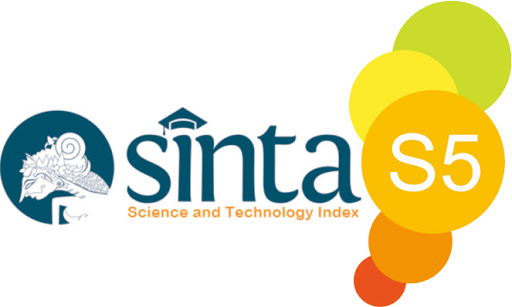Simple Measurements of Refractive Index of Glycerine using a Spherical Flask
Abstract
Keywords
Full Text:
PDFReferences
An, Y. K. (2017). Simple method to measure the refractive index of liquid with graduated cylinder and beaker. Review of Scientific Instruments, 88, 125105.
Armitage, E. (1982). Practical Physics in SI. John Murray.
Bolotin, M. (2012). Water Pearls Optics Challenges for Everybody. Phys. Teach., 50, 144–145.
Chanprasert, K. (2015). A Simple Experimental Set for Refractive Index Measurements of Liquids. Science and Technology RMUTT Journal., 5(2), 49–58.
Cheng, C. (2014). Refractive index measurement by prism autocollimation. Am. J. Phys., 82, 214–216.
Ferreira, A. G. M., Egas, A. P., Fonseca, I. M. A., Costa, A.C. Abreu, D. C., & Lobo, L. Q. (2017). The viscosity of glycerol. J. Chem. Thermodynamics, 113, 162–182.
Freeland, J., Krishnamurthi , V. R. and Wang, Y. (2020). Learning the lens equation using water and smartphones/tablets. Phys. Teach. 58 360-1, 58, 360–361.
Gluck, P. (2011). A simple method to measure the refractive index of a liquid. Phys. Educ., 46, 253–254.
İde, C., and Yüksel, K. (2018). Experimental Investigation of Refractive Index Measurement of Common Solvents and Aqueous Solutions in the Infrared Wavelengths. Balkan Journal of Electrical & Computer Engineering, 6(3).
Ivanov, D., & Nikolov, S. (2015). Optics demonstrations using cylindrical lenses. Physics Education, 50(5), 548–559. https://doi.org/10.1088/0031-9120/50/5/548
Jenkin, F A. White, H. E. (1957). Fundamental of Optics. McGraw Hill.
Limsuwan, P., Asanithi, P., Thongpool, V., Piriyawong, V. and Limsuwan, S. (2012). A volumetric flask as a projector. Phys. Educ., 47, 155–161.
Magazu, S., Migliardo, F. (2008). Study of the correlation between the temperature dependence of viscosity and excess quantities in glycerol. J. Phys.: Condens. Matter, 20, 104202.
Newburgh, R., Rueckner, W., Peidle, J., and Goodale, D. (2000). Using the small-angle approximation to measure the index of refraction of water. The Physics Teacher, 38, 478.
Ortega, U.R., Gómez, C.R.H., Torres, G.V., Medina, M. E. L. (2019). Simple apparatus to calculate the refractive index of liquids based on Snell’s Law Measurement. Measurement, 134, 658–661.
Santosa, I. E. (2021a). Measuring refractive index of a liquid with a spherical shape flask and Tracker. Physics Education, 56(6), 065014. https://doi.org/10.1088/1361-6552/AC1A04
Singh, S. (2004). Diffraction method measures refractive indices of liquids. Phys. Educ., 39, 235.
Soares, A.A., Caramelo, L., and Andrade, M. A. P. M. (2012). Study of the motion of a vertically falling sphere in a viscous fluid. Eur. J. Phys., 33, 1053.
Uchida, S. (2017). A Variable Focal Length Lens Made from a Food Preservation Lid. The Physics Teacher, 57, 173–175.Refbacks
- There are currently no refbacks.

.png)










